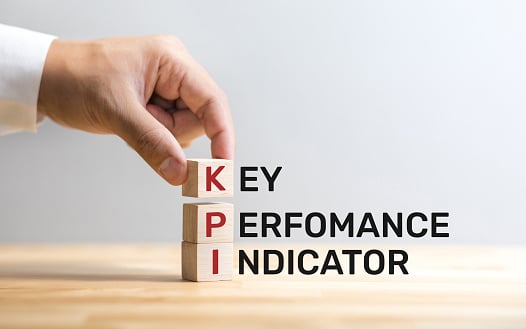The Case for Broad Reach Marketing vs. Narrow Marketing
Learn how Regions Bank Perfected their customer journey
There's a debate raging among some marketing professionals about the merits of audience targeting versus broad reach campaigns. Over the past few years, the broad reach approach has been gaining converts, but it’s important to understand that the “best” marketing approach is not one-size-fits-all. Instead, organizations must consider the pros and cons of each to find the right balance between the two.
Let’s take a look at the fundamentals of both narrow and broad marketing strategies and discuss how organizations can determine the best approach for their next campaign.
What is Broad Reach Marketing?
A broad marketing strategy suggests that a single message, pushed to a large audience via broad reach media will sell more products and net a higher return than a more targeted approach. This idea runs counter to the notion that targeting the right people at the right time with the right message in the right place would deliver a higher return on investment (ROI). The debate is intriguing, so we decided to take a deep dive into data we've collected to help marketing professionals determine which approach might be better for them.
Narrow vs. Broad Marketing
Choosing the right approach can be a challenge for marketers as they plan their campaigns. Here are key elements of narrow marketing and broad marketing:
Pros and Cons: Broad Marketing
Broad marketing requires marketers to reach a large group of people across various traits, preferences, locations, etc. To do so, they must appeal to the aspects of the product that all of these different groups will be interested in, such as price or product options. The main pro of this approach is that you will reach a large number of people, and it can help improve brand equity in the minds of consumers even if it doesn’t lead to a purchase. This leads to the largest con of a broad marketing strategy, which is that you can only expect a small percentage of people reached to actually convert. A broader message that appeals to multiple groups will be less likely to resonate with people who could be considered further down the funnel.
Pros and Cons: Narrow Marketing
Narrow reach marketing focuses on a specific niche of consumers in order to most effectively cater the right message at the right time to the right audience. The con is that the number of people you will reach will be smaller. However, these people are often more likely to convert, as they will have a greater understanding of the solution you’re offering and will feel that your brand really understands that particular group of consumers’ needs.
The Case for a Broad Reach Marketing Strategy
The chief advocate for a broad reach approach has been Byron Sharp. Sharp, professor of marketing science and author of the popular book, "How Brands Grow, states that a brand's consumers aren't as loyal as we may think. They come and go. So, brands looking to win in a competitive marketplace need to win more often and need broader reach.
To start our analysis of the broad reach approach, it will be helpful to have a basic understanding of a Spend to Impact Response Function (SIRF). SIRFs are at the heart of every marketing ROI analysis. The SIRF is an algorithm that mines and analyzes data from past campaigns to develop curves that plot the impact, e.g., sales lift, for various levels of spending on each part of the marketing mix. Ideally, a brand spends on each medium and the media plan as a whole right up to the point that incremental returns no longer justify an additional dollar of investment. You can read more about SIRFs in Rex Briggs' book, "SIRFs UP – Catching the Next Wave in Marketing."

This chart is the plot of a typical SIRF. It shows the value of each dollar spent. One inevitable and inescapable truth of marketing is that each additional dollar we spend has less impact in the marketplace. With a SIRF, the steeper the curve, the higher the ROI.
Advocates of the broad reach approach argue that the curve flattens because of frequency – Delivering the same message to the same person has a diminished impact. They suggest, therefore, that if one pursues more reach, all else being equal, marketing efforts will get a better ROI.
Their second point is that, as budgets expand, each additional dollar spent gets less and less targeted. They believe that any benefit of paying a premium for targeting diminishes as investments increase. Here, broad reach supporters would ask, if a marketer is going to run a big campaign anyway, why pay the premium for targeted advertising in the first place?
In sum, the basic physics of how ROI works favors less expensive broad reach oriented campaigns with less frequency. This observation is the cornerstone of the broad reach argument.
The Case for a Narrow Targeting Marketing Strategy
First, an underlying assumption of a broad reach approach is that advertising creative and messages appeal equally to all people. On the surface, this may seem unlikely, but we looked into the data to see if this was true. In our measurement of thousands of advertisements, covering billions of dollars of advertising spend, in multiple categories, we found it exceedingly rare for a particular ad to appeal equally to all people.
As illustrative, let's look at the results from an analysis of advertising from Warner Bros. Pictures for the movie "Creed."
Here are the SIRF curves for each of the ads run. Note that each of the ads produces its own SIRF:
It's clear when looking at the SIRFs side-by-side that not all ads are created equal. In this analysis, the ad named "Life" has an index of 369. The ad named "Destiny" has an index of 25. The data show that overall Life performed 15x better driving sales results than Destiny. Proponents of the broad reach strategy would run the most influential ad, Life, everywhere and eliminate the other, seemingly weaker ads from the mix.
However, digging a little deeper, that might not be the wisest strategy. Take a look at this heatmap which shows the performance of the message with different groups of people.
In this example, the columns are different ad executions, and the rows show what the analysis found to be "differentiating." Several profile dimensions show different ads resonate with different groups of people. The first row of the chart shows young people aged 13 to 17 years old. For this group, the best ad is Destiny. It indexes at 325 whereas the Life ad under-indexes, at 89. The Destiny ad works nearly 4x better than the Life ad for this critical demographic. If we followed the recommendations of a broad reach approach, we would have gotten rid of the Destiny ad altogether.
Another assumption built into a broad reach approach would be that all people will respond equally to an ad despite their location. Again, we dug into the data to see if this idea held true.
The movie Creed stars Michael B. Jordan and Sylvester Stallone. When mapped, the data suggests that, across the United States, the actors and characters appeal to different people in different measure and for various reasons.
Map: Fans of Sylvester Stallone & Michael B. Jordon
Not surprisingly, if you're at all familiar with the Rocky franchise, there are more fans in Rocky's hometown of Philadelphia than in Boise. There is enough of a difference to justify paying a small premium for local heavy-up advertising on top of a national media plan.
Our analysis further suggests that, for many consumers, proximity is a key consideration as well. The further someone has to drive; the less likely they are to convert.
This map below shows what may be called the "Gravity Effect." The green dots are the customers for a marketer's brick-and-mortar location shown in the center. The average amount of time it takes for a consumer to reach the location is ten minutes. If it takes someone more than 20 minutes to reach this location, the likelihood of them becoming a customer is 100x lower. In this scenario, geo-fenced ads, location-based marketing, direct mail and out-of-home billboards selected based on this gravity effect will probably perform better, given the right message, than mass reach untargeted advertising.
It appears weather, too, can affect conversion in many categories by 10 percent or more. When combined, these two factors present a strong economic rationale for local targeting.
In the final analysis, if one pays a 30% premium for targeting, and one manages frequency, then a marketer can more than double their marketing ROI compared to broad reach.
Sharp's theory about broad reach strategies may be gaining popularity just because too many marketing professionals lack useful, high-quality data to identify and target the right audience with the right message at the right time in the right place. Marketing professionals looking to compete in today's highly competitive marketplace need the kind of decision-making power that comes from combining information about audience, creative, message, and location with data about cost, frequency, and other media dynamics. Furthermore, marketers need to demand that these insights be available in a timely fashion so that campaigns can be optimized while live.
The technology does exist for those that want to achieve a higher level of marketing impact. Granted, the in-campaign impact feedback leveraged by Warner Bros. for the movie Creed is new, and many may be unaware of its existence. But Warner Bros. recently won the Data Creativity Award for the Attribution Category at the I-COM Global Summit in London.
Improve ROI with a Balanced Approach
If you're considering a more targeted, "right message to right person" approach here are five tips to help unlock a higher ROI for your marketing:
1. Start with Person-Level Purchase Propensity
If you sell through a physical location, calculate gravity effects, geo-fence appropriately.
2. Manage Frequency
Media owners will sell as many impressions as they can, leading to marketers overspending and seeing diminishing returns. Make sure to set frequency pacing and caps to maintain a higher ROI.
3. Calculate the Upcharge for Targeting
Sometimes a broader reach's lower cost beats a high premium targeting approach. The best media planning algorithms will blend reach and targeting to build the best media plan.
4. Measure the Impact of Message
Critical for understanding the differential impact of different messages on different people. A useful optimization system will incorporate this data, and will adjust message targeting and media mix to maximize ROI.
5. Compare Targeting to Broad Reach
The attribution and media planning tools should let you do a side-by-side comparison and what-ifs so you can determine the best approach.
Final Thoughts
In the end, our data suggests that marketing professionals need to consider both a broad marketing strategy and a more targeted, narrow approach. The key to successfully navigating to a higher ROI for your investment is an understanding of new tools that are available and a focus on business outcomes, like sales and revenue, that really matter to your business. Today’s solutions, such as Marketing Evolution’s performance measurement and media planning tools, enable strategic planning that allows marketers to uncover detailed optimizations. With these insights, organizations can reach customers where they’re at and consistently drive higher marketing performance.






















